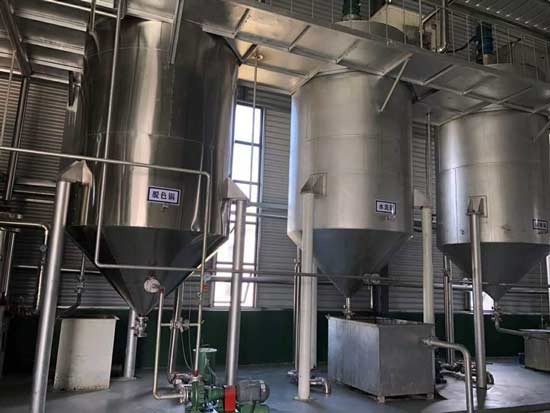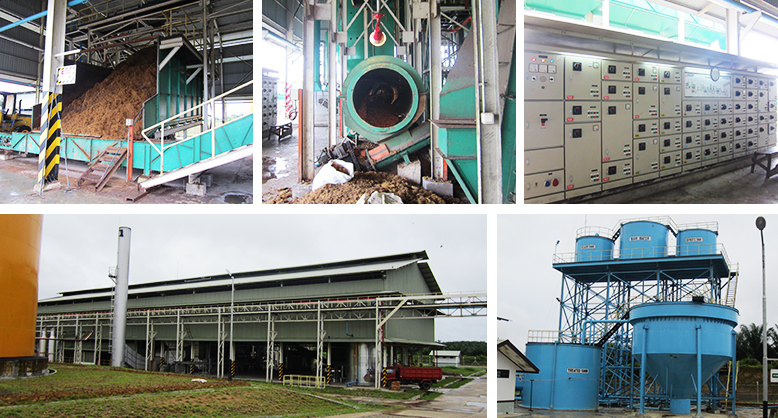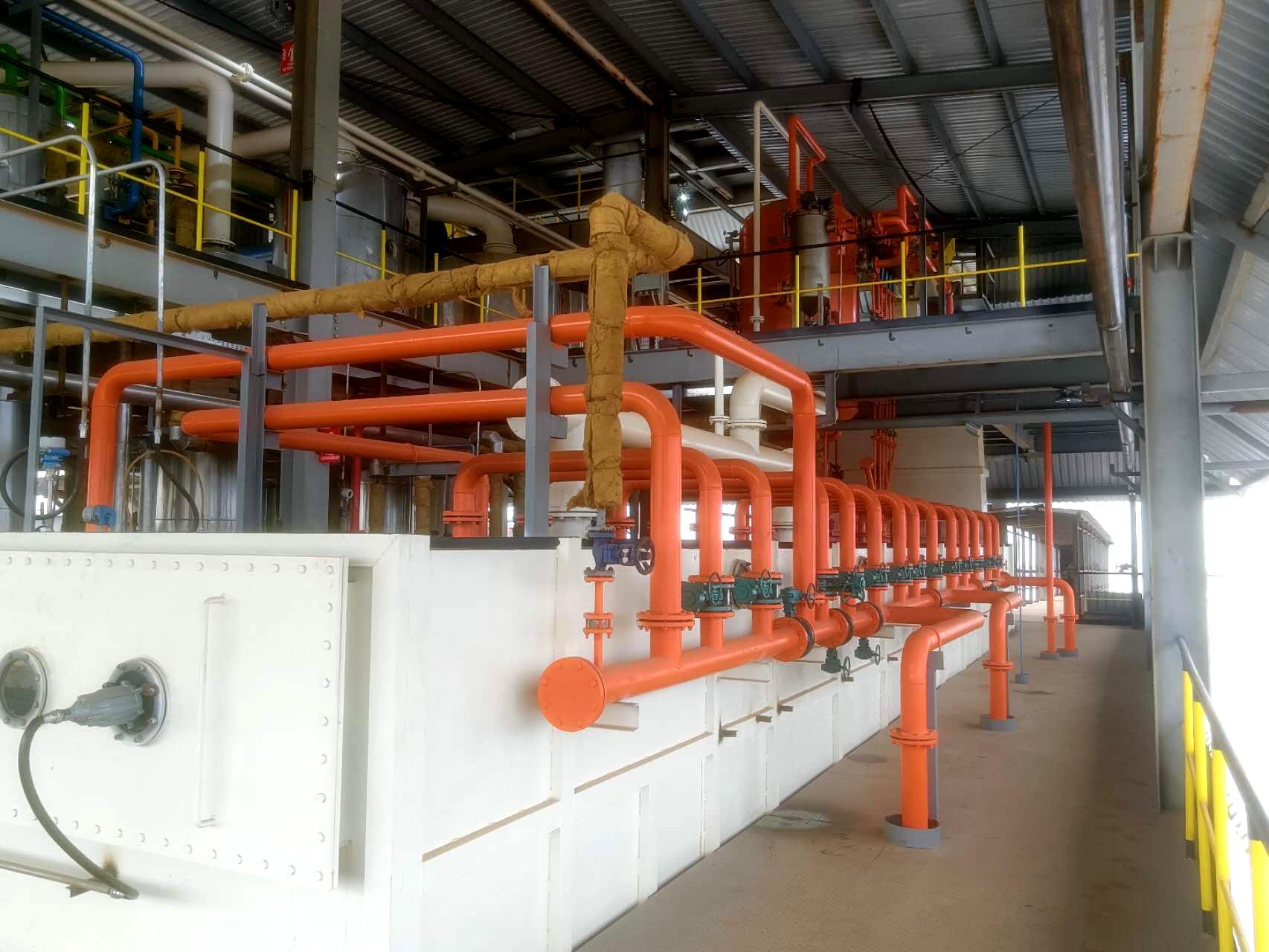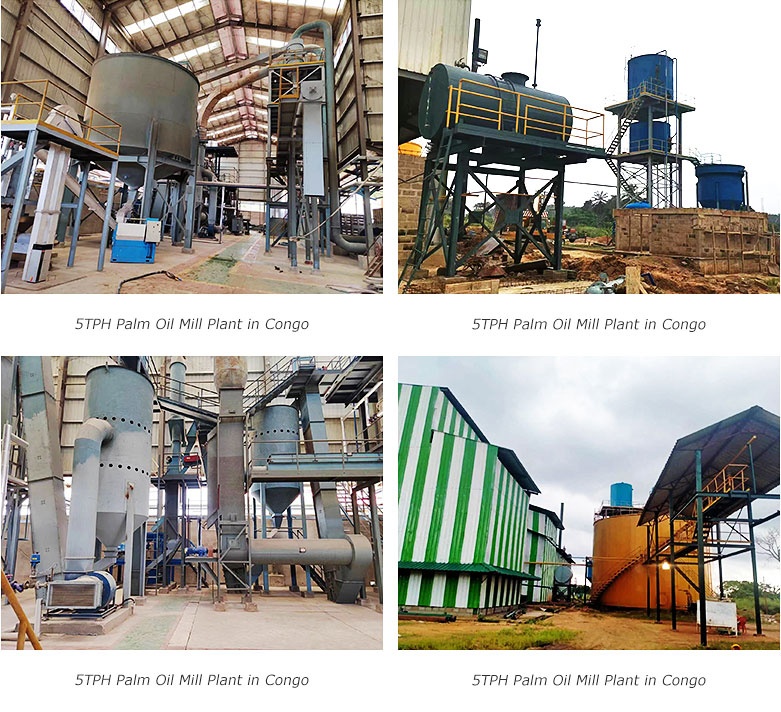The first-grade soybean oil refining process needs to be processed by six processes: hydration and degumming, alkali deacidification, vacuum drying, adsorption and decolorization, vacuum deodorization and low-temperature dewaxing in soybean oil refinery plant. Crude soybean oil is transported to soybean oil refining machine through pipeline, and it is firstly subjected to hydration degumming.
1. Hydration Degumming-Soybean Oil Refinery Plant
Hydration degumming is to add a certain amount of hot water or acid, alkali, salt and other electrolytes in soybean oil, the use of phospholipids and other lipids such as hydrophilic molecules, to make the colloidal impurities absorb water and expand the cake cohesion, so that the colloid precipitation precipitation and separation of fats and oils.

2. Deacidizing by Alkali Refining-Soybean Oil Refinery Plant
Alkali refining deacidification is through caustic soda solution and soybean oil in the free fatty acid neutralization reaction, the generation of sodium soap precipitation in the oil, and then separated from the oil a deacidification method. Soap foot has a strong adsorption capacity, can be adsorbed in the oil protein, mucus, pigment and even mechanical impurities, together with the precipitation. In soybean oil, there is a part of the phospholipids will also be saponified by lye, the formation of soap feet precipitation.
3. Adsorption Decolorization-Soybean Oil Refinery Plant
Adsorption decolorization method is the use of some of the soybean oil in some pigments have strong selective adsorption adsorbent, in certain conditions to remove the pigment and other impurities in soybean oil, so as to achieve the purpose of decolorization.
The type of decolorant is one of the most important influencing factors for the effect of adsorption and decolorization. Adsorption decolorization in addition to removing the pigment, can also remove trace metals in soybean oil, residual soap, phospholipids, some odor substances, polycyclic aromatic hydrocarbons and pesticide residues. At present, soybean oil decolorization commonly used adsorbent for activated white clay.
4. Vacuum Deodorization-Soybean Oil Refinery Plant
Deodorization process in soybean oil refinery plant is the use of triglyceride and affect the smell of oil, color and stability of odor substances between the volatility (gasification partial pressure) there is a big difference, through high temperature, vacuum conditions, with the help of steam distillation principle to remove the process. In essence, deodorization is a mass transfer process. Requirements in the conditions below the decomposition temperature of fats and oils, from the oil to remove all odor substances.

5. Low Temperature Dewaxing-Soybean Oil Refinery Plant
The low temperature dewaxing process is based on the difference between the melting point of wax and oil, and the wax solubility in oil becomes smaller with the lowering of temperature, the crystal wax is precipitated through cooling. Then the wax and oil are separated by filtration.
After the five processes, most of the impurities in the oil are removed, which improves the quality, color and safety of soybean oil, and prolongs the storage time.
Key Technology of Soybean Oil Refining Process:
1. Water quality control: in the alkali refining process, the need to use clean water to avoid water pollution caused by soybean oil quality decline.
2. Temperature control: in the process of decolorization and deodorization, the need to control the appropriate temperature to avoid the loss of nutrients in soybean oil and the production of harmful substances.
3. Time control: In each soybean oil refining process step, it is necessary to control the appropriate time to ensure the quality of soybean oil and production efficiency.



